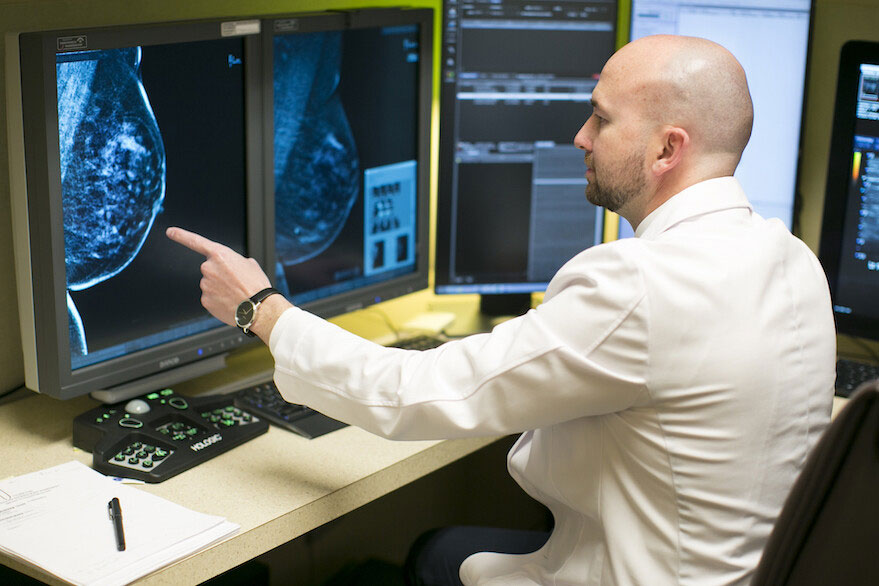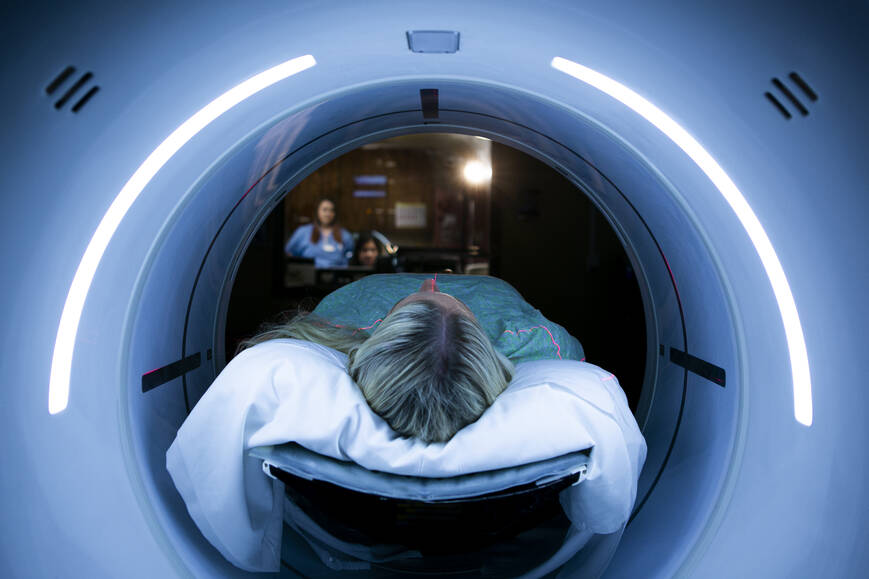Screening and Diagnostic Mammograms
The Breast Imaging Center at UMC offers Screening and Diagnostic Mammograms.
A mammogram is an X-Ray of the breast that is used to screen for cancers and other conditions within the breast. Mammograms are used to find early signs of cancer and help to decrease breast cancer deaths.
Screening Mammograms:
Annual Breast Screening Mammograms are essential to early detection. According to the American Cancer Society, early screening saves lives. Mammograms are the most effective and important early detection method.
Guidelines for early detection:
- All women: monthly breast self-exam
- Women age 20 and older: clinical breast exam at annual physical
- Women age 40 and older: yearly mammogram and clinical breast exam
- Women at high risk for breast cancer: yearly MRI and mammogram
Diagnostic Mammograms:
Diagnostic mammograms are ordered for several different reasons. If your mammogram results require further examination, your doctor may refer you for additional mammographic imaging, also known as a diagnostic mammogram. Reasons that might require a diagnostic workup are:
- Lumps, knots or thickening inside the breast or underarm
- Breast swelling, redness, or darkening
- Breast size or shape changes
- Skin dimpling or puckering
- Scaly nipple or rash
- Nipple inversion or retraction
- Spontaneous nipple discharge
If you start to notice any of these changes listed above, contact your doctor to see about a referral for a diagnostic mammogram.
3D Mammograms

The Breast Imaging Center at UMC also offers 3D Mammography. 3D mammograms are an FDA-approved advanced screening and diagnostic tool designed to identify smaller tumors sooner for earlier breast cancer detection. During the 3D part of the exam, the x-ray arm sweeps in a slight arc over the breast, taking multiple images of the breast tissue. The computer then produces 3-dimensional images in one-millimeter slices giving the Radiologists greater visibility to see the breast tissue’s details. You may also hear it called breast tomosynthesis. Any woman needing a mammogram should consider 3D mammography.
Breast Ultrasound
Ultrasound imaging of the breast uses sound waves to produce pictures of the internal structures of the breast. It is primarily used to help diagnose breast lumps or other abnormalities you or your doctor may have found during a physical exam, mammogram or breast MRI. Ultrasound, also known as sonography, is a safe, painless, and noninvasive procedure that does not use radiation.
Breast MRI

Magnetic Resonance Imaging (MRI) of the breast captures multiple images of your breast. These images are combined, using a computer, to generate detailed pictures. Breast MRI’s are often used to screen for breast cancer in women thought to have a high risk of the disease. A breast MRI may also be used to assess the extent of breast cancer.
MRI’s may be recommended if:
- You have been diagnosed with breast cancer and your doctor wants to determine the extent of the cancer
- You have a suspected leak or rupture of a breast implant
- You are at high risk of breast cancer, defined as a lifetime risk of 20% or greater, as calculated by risk tools that take your family history and other factors into consideration
- You have a strong family history of breast cancer or ovarian cancer
- You have very dense breast tissue
- You have a hereditary breast cancer gene mutation (BRCA1 or BRCA2)
- You have had radiation treatments to your chest area before age 30
If you are unsure whether you are considered high risk, ask your doctor to help you determine your personal risk estimate. A referral to a breast clinic or breast health specialist may help you better understand your risk and your screening options.
A breast MRI is intended to be used in addition to a mammogram or another breast-imaging test, not as a replacement for a mammogram. Although it is a sensitive test; a breast MRI can still miss some breast cancers that a mammogram will detect.